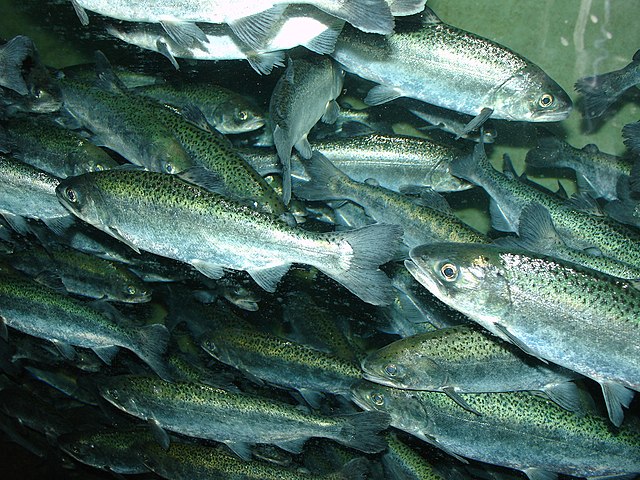Chum salmon and roe prices are tipping scales in Japan after 2025 landings in the northern island of Hokkaido slowed considerably.
This has had an effect on domestic Atlantic salmon retail, which on October 1, 2025 ranged at 4700-4900 yen ($30.92-32.23) a kg. These rates mark a 500-yen ($3.29) rise above 2022’s averages.
The same goes for medium fillet portions for the economy buyer, currently fetching 470 to 490 yen ($3.09-3.22) per 100 g.
But in real-time retail at Costco, the range expands to 4,980-5,380 yen ($32.76-35.4) /kg, per Lifestyle Japan.
Chum Run Down, Roe Prices Up
Despite this being the peak September-November Hokkaido Pacific salmon run, some premium seafood are still untouchable at retail.
One of these is chum, Japan’s choice salmon type and also the second largest of the Pacific breeds.
By October 5, Hokkaido’s fishers had landed 8,700 tonnes of the species or 60% down year-on-year.
The decline partially owes to competition with pink salmon for zooplankton, a rivalry that forces chums to migrate.
Because Hokkaido is home to 99% of the national chum catch, the decline is already telling on fish lovers’ pockets.
Chum roe’s wholesale prices have surged to 10,000 yen ($65.78) a kg as shortage hits the sashimi market.
Hence, Japan could turn to Russia and Alaska to boost its roe supplies by buying levels above those of 2024.
Alaska had by early September nearly made its 2025 landings target by hauling in 185 million pink salmon units.
Alaska’s salmon roe was in early October 2025 selling at rates 20% above 2024’s while Russia was exporting pink salmon roe expensively.
Meanwhile, customers in Japan are growing wary of expensive imported roe and naturally expect import increases to force down domestic pricing.
For now however, it is all about a lackluster Hokkaido chum season that has upped salmon prices in Japan substantially. And as the following statistics indicate, the Japanese fishery was once way bigger in production terms than it is now.
Japan Salmon Statistics
Japan produces both Pacific and Atlantic salmon at sea and in aquaculture, mainly chum, pink and Atlantic salmon species. According to the North Pacific Anadromous Fish Commission (NPAFC), Japan’s pacific salmon production last peaked in 2003 at over 300,000 tonnes. By 2024, however, the harvest had fallen beneath 50,000 tonnes. This is about 10 times below the all-time landings high of over 500,000 tonnes in 1939. However, projections put 2027 production of sashimi-ready trout/salmon species to recover past 50,000 tonnes.
Although Japan is a major salmon fisher, it remains one of the biggest spenders in imports of the fish. In 2024, it expended $92.9 million to the import of 9.6% of all prepared/preserved salmon worldwide. Only Germany (26.9% share) and the U.S. (12.1%) spent more that year.
How much salmon quota does Russia concede Japan in its waters?
Russia allows Japan’s fishers to catch trout and salmon emanating from its rivers at a quota of 2,050 tonnes annually, as of 2023. According to Jiji Japan, the concession takes place in an area of 200 nautical miles off the island of Hokkaido. Japan pays Russia up to 300 million yen ($1,973,684) as friendly fee for the annual agreement. April marks the beginning of the salmon season in this protectorate.
